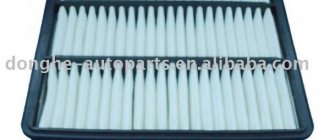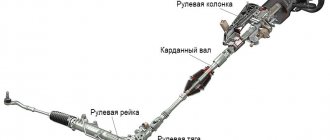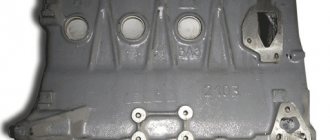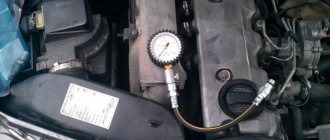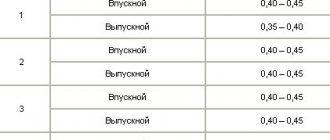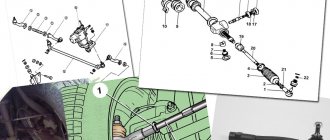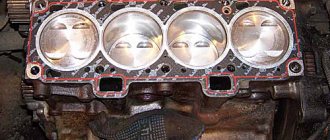Hello, our dear reader! In our article we will tell you about a well-known type of shut-off pipeline valve - a shut-off valve.
It is impossible to imagine our life without pipelines. At any enterprise, farm, mine, public building and private home, there are various pipeline systems equipped with all kinds of shut-off and control valves. A shut-off valve, or, in the old way, a valve, twenty years ago stood in every house, at the inlet, at the water distribution points, in every mixer.
What is it and what is it for?
A valve, or valve, is a type of shut-off pipeline fitting. The name “valve” has been abolished since 1982, but it is still used.
A valve is a fitting in which the locking element moves parallel to the axis of movement of the liquid or gas in the pipe and completely covers its working section. The valve has two operating positions: “open” and “closed”.
Types of valves and their principle of operation
The main working part of the control valve is the valve. According to the design of the regulatory body, the following types of valves are distinguished:
- saddle,
- membrane,
- cellular,
- spool valve
Saddle gate
The main elements of a saddle valve are the plunger and the seat. A plunger is a cylindrical piston whose length is significantly greater than its diameter. The seat is a part of the valve located between the passage hole of the valve and its internal part.
As the piston moves through the seat, the size of the bore changes. Single- and double-seat control valves are available. Single seat is used on small diameter pipes.
A double-seat valve allows you to more accurately regulate the pressure in pipes and can be used in pipelines with a diameter of up to 30 cm, since in a double-seat system the plunger is better balanced and it is easier to ensure the tightness of the valve.
Diaphragm valve
This type of valve also has a seat, but instead of a piston, it is covered by a flexible membrane. The membrane not only allows you to regulate the pressure of the working medium, it protects the internal parts of the valve from the effects of aggressive substances. Gates of this type have a high level of tightness of moving elements.
However, a control valve with a diaphragm seal is forced to additionally be equipped with positioners that control the position of the rod. The need to complicate the design is due to a possible decrease in adjustment accuracy due to friction between the elements.
Cage type gate
As a guiding device for a movable element of this type of valve, a cage is used - a saddle with radial holes to control the flow of the working medium.
We recommend that you read: Shut-off valves and their use in pipeline systems
Inside the cell, changing its throughput, a hollow cylinder moves. Thus, the cell performs the function of a saddle and a passage opening.
Controls and technical characteristics
The shut-off valve can be controlled in the following ways:
- manually;
- large products are controlled by a pneumatic, electromagnetic or mechanical drive;
- remotely - using all kinds of rods, transition columns;
- automatically - opening and closing occurs either under the influence of the working environment, or a signal from the instrumentation switches on the drive and opens and closes the flow of the environment without operator participation.
Valves are used in liquid and gas pipelines in a wide range of operating pressures - from vacuum to 250 MPa and temperatures - from -200°C to 600°C. They are usually used in pipelines of small diameters - as the diameter increases, the effort required to move the valve increases significantly; it is necessary to complicate the design for the correct fit of the locking element to the housing seat.
Valve markings include:
- the first two digits – 25 – control valve;
- the letters after the first numbers indicate the material from which the mechanism is made;
- followed by numbers - if two, then this is the model number; if there are three digits - the first indicates the drive number, the last two - the model number;
- The last letters indicate the material of the sealing surfaces.
Principle of operation
The essence of the operation of a control valve is to move a plunger or other type of valve under the pressure of a moving medium. When the shut-off element blocks part of the orifice, the flow of liquid or gas passing through the valve is reduced.
Complete closure of the valve causes the flow to be blocked and the pressure in the system to drop to zero.
Based on their operating principle, control devices are divided into those that block, mix or separate the flow of the working medium.
Shutting valves include two-way valves, and mixing valves include three- and four-way valves.
This video will introduce you to the design of a shut-off control disc valve:
Connection type
Connection of shut-off valves can be:
- coupling - the product has an internal thread and is simply screwed onto the thread on the pipeline;
- fitting - the valve has a pipe with an external thread, it is attached to the pipe using a union nut;
- flanged - on both sides of the valve there are plates with holes for bolts, which are attached to the mating flanges of the pipeline;
- welded – the reinforcement is welded. This type of connection is required where the tightness and reliability of other types of connections are insufficient (in toxic, aggressive, radioactive working environments);
- pin-type - the presence of connecting pipes with threads and a collar on the pipeline and fittings. The end of the pipeline, which has a flange, is pressed against the end of the valve using a union nut. The most obvious example is connecting a hose to a fire hydrant.
Device
The valve has a body with two connecting pipes; inside the body there is a “seat” and a spool. In the closed position, the spool covers the seat. The spool is controlled by a spindle, which transmits force and movement to the spool using a running element. The running gear is used to move the running gear outside the working area. To seal, the spindle passes through a seal.
- 1 – spindle
- 2 – yoke knot
- 3 – spool
- 4 - body
Types and designs
Valves differ in the direction of flow: there are straight-through, angular and through (with a displacement of the water flow at the inlet relative to the outlet).
Depending on the method of sealing the spindle (stem), valves are of the following types:
- stuffing box The most common type. On the outside of the housing, at the point where the spindle passes, a stuffing box is created, filled with stuffing box made of sealing material;
- bellows. The bellows is made from a corrugated pipe welded to the upper and lower rings. The bellows assembly is fixedly connected by the upper ring to the valve body, and by the lower ring to the rod (or valve spool). The rod moves inside the bellows, while the corrugated pipe compresses and decompresses. Such a unit has better sealing than a stuffing box unit and is used when working with toxic and aggressive media. Disadvantages: design complexity and high cost;
- membrane fittings - the seal is made in the form of a membrane, the central part can bend with an amplitude sufficient to close/open the shut-off element. Disadvantages: short service life, low operating pressure and temperature.
Advantages of control valves
This type of regulator is used in domestic and industrial water and gas supply systems, heating networks and oil pipelines.
We recommend that you read: Thermostatic valve for heating and air conditioning systems
The wide popularity of control valves is due to their advantages:
- Reliability and durability. The body is made of durable materials such as stainless steel, brass, cast iron, alloyed metals that are resistant to aggressive chemicals.
- Simplicity of design and efficiency. The mechanism of operation of the valve is simple and at the same time sufficient to perform the task of accurately regulating the pressure of the working medium.
Note! The use of control valves in heating systems allows, by regulating the indoor climate, to reduce coolant consumption. Shut-off and control valves simplify repair work, allowing you to shut off individual sections of the pipeline without stopping the operation of the entire system.
- Variety of types, types and sizes. You can select a control valve for any pipeline purpose. There are valves with bodies of different sizes, with gates of various designs, with manual and automatic control, and a variety of sensors.
Advantages and disadvantages
Advantages:
- simple reliable design;
- compact dimensions; small construction height in contrast to the valve;
- high tightness (can be used for gas and pneumatic pipelines);
- durability due to slight wear of sealing elements;
- ease of repair and maintenance;
- use in a wide range of operating pressures - from vacuum to 250 MPa and temperatures - from -200°C to 600°C;
- small spindle stroke.
Flaws:
- high hydraulic resistance;
- scope of application – for small diameters;
- can be used to roughly regulate the flow of the medium (remember the Soviet almost eternal “faucets”);
- The design of the housing determines the presence of stagnant zones, which can serve as a place for the accumulation of debris, scale, and impurities.
Tips for choosing
The choice of shut-off valves for your home should begin with determining the material. Modern valves are made of steel and brass, sometimes with a cast iron body. The working body is always made of steel, most often stainless.
Valves are usually installed at water points where mixing of hot and cold water is not required: in toilets, for connecting tanks, in utility rooms. Sometimes they are installed at the cold or hot water inlet. When installing at the inlet, you should weigh the fact that they significantly reduce the water pressure in the home network. For the water collection point there is such an advantage as the ability to use it as a regulating device for water flow (for a faucet with its operating stroke of 90 ° this is somewhat more difficult to do).
Valves for metal-plastic are extremely rare. Flanged products are also usually not installed on pipelines with a diameter of less than 50 mm. Sometimes they choose products with a fitting connection.
Brass and bronze are good because they do not rust.
By design, valves for home use are usually sleeve type. Almost all valve fittings sold in construction supermarkets differ in price, manufacturer and design. The likelihood of buying a frankly low-quality product is low. But he doesn’t post a check just in case.
In practice, the choice of a home craftsman comes down to the choice of design and price. Good luck with your choice!
Rules for installation and operation of the device
When completely replacing or laying a new pipeline, it is necessary to ensure the presence of threads on the pipes at the points where the fittings are connected.
Required tools and materials
To complete the work you will need:
- the valve itself;
- if the valve is a union valve, you may need an “American” union nut;
- FUM tape;
- two adjustable wrenches, perhaps one of them is a gas wrench;
- if it is necessary to cut threads, you will need a die of the appropriate diameter and a die holder;
- a grinder with a cutting disc, if necessary, cut pipes; it is also possible to use a hacksaw for metal.
Connection diagram
The installation of a coupling valve has two options: installation in a pipe as a shut-off valve and installation at a water collection point. The installation technology is slightly different for different options.
Work progress
Before starting work, it is necessary to shut off the water supply to the system.
If the fittings are changed, they must first be dismantled.
If the valve is being installed in a new location as a shut-off valve for part of the system, it is necessary to cut out a piece of pipe and use a die to cut the thread. When cutting a pipe with a grinder, do not forget to wear safety glasses.
Then the threads are wrapped with FUM tape. Screw the union nut onto the valve (not forgetting about the FUM!), then screw the assembly onto the thread on the pipeline. Using a union nut, seal the connection with the second branch pipe of the pipeline.
It is imperative to let water into the system and check the tightness of the connection. If there is leakage, all connections must be tightened.
Installing a faucet valve at a water point is even simpler: seal the threads with FUM tape and screw in or tighten the valve. In this case, it is undesirable to use a fitting model; its fastening with a union nut is not so reliable under constant variable loads when unscrewing and tightening the tap and drops more often occur at the joint.
Features of installing a valve in a plastic pipe: MPH or MPV are welded to the ends of the pipe, depending on the type of valve, then installation occurs in the same way as when inserting into steel pipes.
Our video will help you see all the details of valve installation.
How to install check valves for pumping stations
A check valve for joint operation with a pumping station should be selected at the design stage. In some pump models, such valves are included in the design; for others, there are several rules:
- For vacuum type (suction) pumps, the valve is mounted at the pump outlet, before the hydraulic accumulator.
- If the well is deep and at a large distance from the well on the surface, an additional device should be installed at the water intake.
- For pressure pumps lowered into the well, the valve is mounted on the outlet pipe.
In addition, during installation, the flow direction indicated on the housing must be strictly observed and all connections must be carefully sealed.

